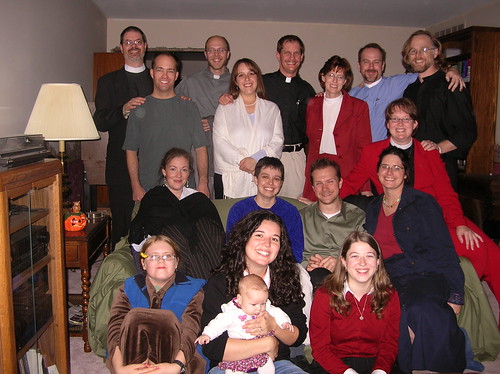Relicuriosity
My delightful Early Church History class evinced some curiosity the other day about martyrs and relics. In the course of trying to address their interest, I mentioned that in the Catholic tradition, it’s customary to require a primary relic (usually an actual recognizable portion of a saint’s body) for the installation of an altar, and that St. Luke’s had an assortment of relics.
Well, of course, right away they wanted to know what the relics were. I remembered that the high altar enclosed a primary relic of St. Elizabeth Seton (at least, according to parish lore); I knew we had more relics, though, so I asked John Lukens, on whom I rely for all wisdom about our parish. John pointed me to a sealed statement from the Bishop James Montgomery (ninth Episcopal bishop of Chicago), stating that our St. Luke’s altar contained a primary relic of St. Domity, a primary relic of St. Louinian, a primary relic of St. Joachim, and tertiary relics of Sts. Benedict and Teresa.
Now, I would not be inclined to doubt the sealed affirmation of a bishop, but this placard entails several problems. First, I can find no record of the existence of a “St. Domity” or a “St. Louinian,” so the matter of their primary relics seems. . . cloudy. St. Joachim is familiar as the father of the Virgin Mary; that would attenuate the likelihood of a relic of his making its way to Evanston, except perhaps that the Catholic Encyclopedia of 1911 notes that the supposed tomb of Joachim and Anna was discovered in 1889. Perhaps that rediscovery made available relics that had long rested in obscurity.
The tertiary relics — items that had touched a saint or a saint’s relic, as distinct from secondary relics hallowed by close association with a saint — pose no great problem; I reckon that it’s pretty simple to come by tertiary relics even of Benedict and Teresa. I’ll have a lingering fascination, however, with the question of who on earth Sts. Domity and Louinian might have been. (For the time being, I’m imagining pious dowagers in the congregation whom Bp. Montgomery decided were saintly enough for commemoration here.)
